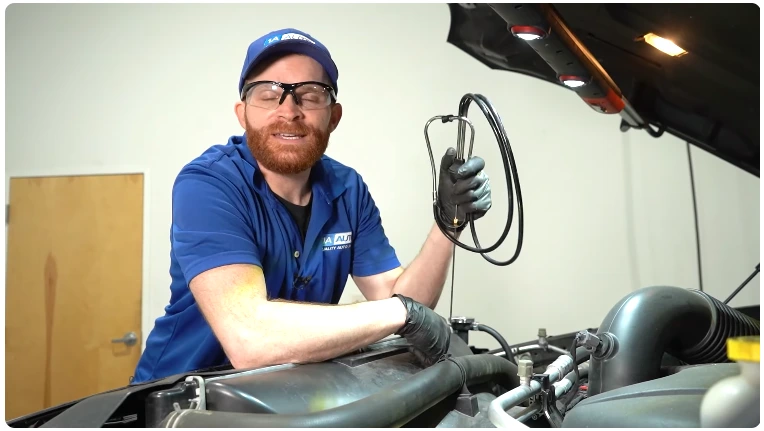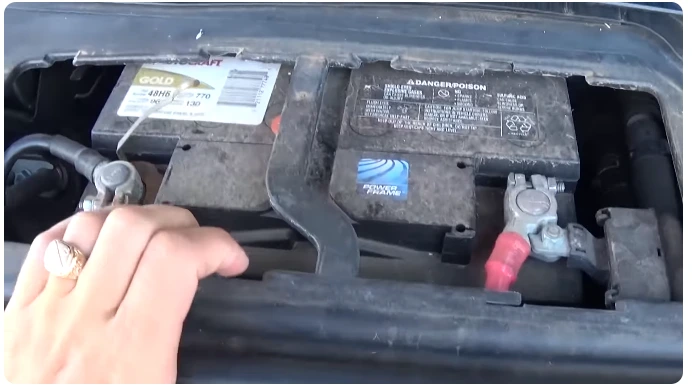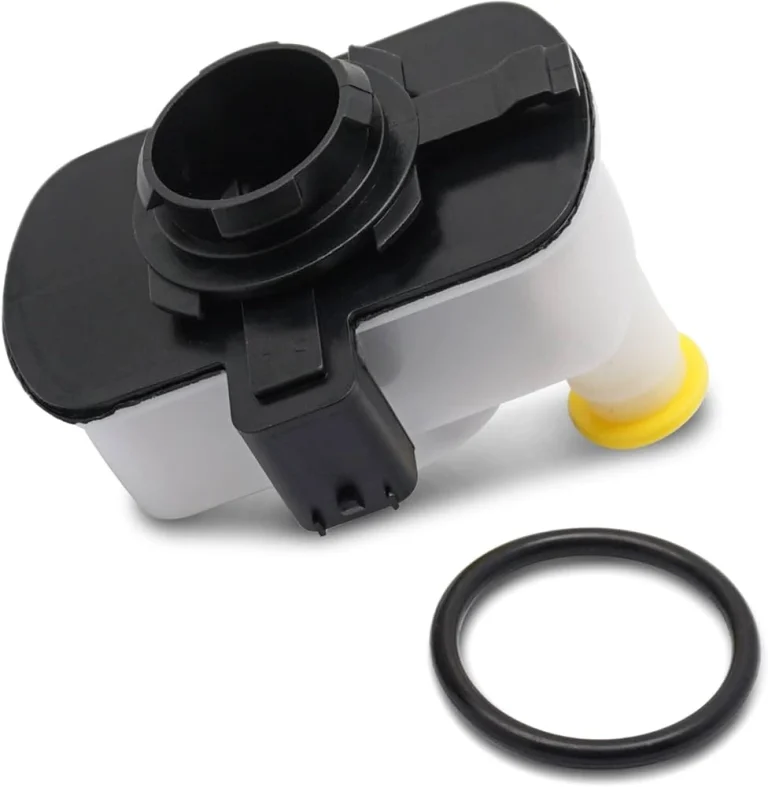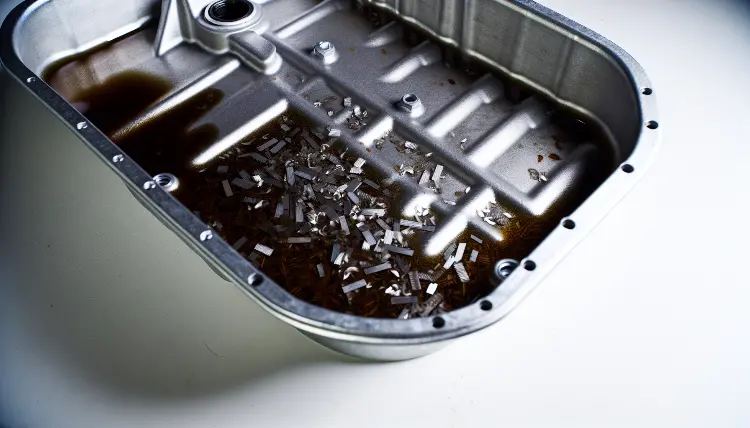Engine Squealing Sounds Like a Belt, But It’s Not? Troubleshoot It Today!
Engine squealing sounds that resemble a belt may not actually be due to a belt issue. If your engine is making a squealing sound that sounds like a belt, but it’s not the belt, there may be other underlying problems causing the noise.
Now, let’s explore what could be causing the engine squealing sound that resembles a belt, but is not actually related to the belt. One possible issue could be a faulty tensioner or pulley, which can cause the same type of squealing noise.
Another potential cause could be a malfunctioning accessory such as the alternator, power steering pump, or air conditioning compressor. Additionally, a loose or worn-out bearing in any of these components can also create a similar sound. It is crucial to identify the real cause of the engine squealing to prevent further damage and ensure your vehicle’s optimal performance. Let’s delve into these potential causes and how they can be resolved.
Understanding Engine Squealing Sounds
Is your engine emitting a high-pitched squeal that resembles a screeching belt? Before assuming the obvious, let’s dive a bit deeper into the subject of engine squealing sounds. Understanding the causes and differentiating between belt-related and non-belt-related squealing sounds is crucial in troubleshooting the issue promptly.
So, let’s explore the common causes and importance of swift troubleshooting when encountering engine squealing sounds.
Common Causes Of Engine Squealing Sounds
- Misaligned or worn-out belts: If the belts are not properly aligned or become worn-out, they can emit a squealing sound.
- Tensioner or idler pulley issues: Faulty tensioner or idler pulleys can cause the belt to slip or produce a squealing noise.
- Malfunctioning water pump: A faulty water pump can create excessive friction, resulting in a squealing sound.
- Alternator problems: A malfunctioning alternator can cause the belt to slip, leading to squealing noises.
- Power steering system issues: Problems in the power steering system, such as a worn-out pump or low fluid levels, can generate squealing sounds.
Differentiating Between Belt-Related And Non-Belt-Related Squealing Sounds
Knowing whether the squealing sound is belt-related or not can help narrow down the issue and avoid unnecessary repairs. Here’s how to differentiate between the two:
Belt-related squealing sounds:
- The noise is consistent with engine rpms and intensifies with increased acceleration or load.
- The squealing is more prominent when starting the engine or turning on certain systems, such as the air conditioning or power steering.
Non-belt-related squealing sounds:
- The noise may occur even when the engine is idling or when specific systems are not in operation.
- The squealing is not connected to engine rpms and does not increase with acceleration or load.
The Importance Of Prompt Troubleshooting
Addressing engine squealing sounds promptly is essential to prevent further damage and costly repairs. Here’s why quick troubleshooting is crucial:
- Identifying and rectifying the issue early can prevent more significant damage to engine components.
- Prompt action can save you from potential breakdowns or accidents caused by belt failures.
- Resolving the problem swiftly can help maintain your vehicle’s overall performance and fuel efficiency.
Understanding engine squealing sounds and differentiating between belt-related and non-belt-related causes are key when troubleshooting. By taking swift action to address the issue, you can ensure the longevity of your vehicle and avoid costly repairs down the road. Remember, it’s always a wise choice to consult a professional mechanic if you’re unsure about the source of the squealing sound in your engine.
Belt-Related Engine Squealing Sounds
If you’re hearing an engine squealing sound that resembles a belt, there’s a good chance that you might be dealing with a belt-related issue. While a loose or worn belt is often the culprit behind such noises, it’s not always the case.
In this section, we will take a closer look at the serpentine belt and its components, as well as how to identify signs of a worn or damaged belt. Finally, we will guide you through the step-by-step process of replacing the serpentine belt.
Examining The Serpentine Belt And Its Components
The serpentine belt is an essential component in your engine, powering various systems such as the alternator, air conditioning compressor, power steering pump, and water pump. Understanding its components will help you properly diagnose any issues related to the belt.
Here are the key points to consider:
- The serpentine belt is made of rubber and has several grooves running along its length.
- Tensioner pulley: This pulley, connected to an arm or spring, helps maintain the right amount of tension on the belt.
- Idler pulley: Its purpose is to redirect the belt and maintain proper alignment.
- Belt routing diagram: Check your vehicle’s manual or the underhood sticker for a diagram showing the correct belt routing.
Identifying Signs Of A Worn Or Damaged Belt
When inspecting your serpentine belt for signs of wear or damage, keep an eye out for the following indicators:
- Cracks: Small cracks or splits along the belt’s grooves can increase the likelihood of failure.
- Fraying: If the edges of the belt appear frayed or worn, it may be time for a replacement.
- Glazing: A shiny or slick appearance on the belt’s surface can indicate wear or slipping.
- Squealing noise: Although we mentioned earlier that the noise may not always be belt-related, a persistent squealing sound often means the belt needs attention.
Replacing The Serpentine Belt: Step-By-Step Guide
If your inspection reveals that it’s time to replace the serpentine belt, follow these steps:
- Locate the tensioner pulley and use a wrench or socket to release the tension on the belt.
- Slide the old belt off the pulleys, making note of the correct routing.
- Refer to the belt routing diagram and install the new belt, ensuring it correctly fits into each pulley groove.
- Apply tension to the belt by using the tensioner pulley and check for proper alignment.
- Double-check the belt’s routing to verify it matches the diagram.
- Start the engine and listen for any abnormal sounds.
- Finally, inspect the belt again a few days after replacement to ensure it’s adjusted correctly and performing optimally.
Remember, addressing a worn or damaged serpentine belt promptly can prevent more significant issues down the road. Regular inspections and timely replacements will keep your engine running smoothly and minimize the risk of unexpected breakdowns.
Other Possible Causes Of Engine Squealing Sounds
Faulty Pulleys And Tensioners: How To Diagnose And Fix Them
When it comes to engine squealing sounds, faulty pulleys and tensioners can often be the culprit. Here are the key points to keep in mind when diagnosing and fixing this issue:
- Tensioners play a crucial role in maintaining the proper tension of the belts in your engine. Excessive wear or damage can cause them to become loose, resulting in squealing noises.
- Inspect the pulleys for any signs of wear, damage, or misalignment. If they are worn out or not properly aligned, they may need to be replaced.
- To diagnose the issue, carefully listen for the location of the squealing sound. Tensioner and pulley-related noises are often more prominent on the front side of the engine.
- If you suspect a faulty tensioner or pulley, it’s recommended to have a professional mechanic check it out. They have the expertise and tools to accurately diagnose the problem.
- Depending on the severity of the issue, the tensioner or pulley may need to be replaced. Regular maintenance is key to preventing these components from failing in the first place.
Malfunctioning Water Pump: Symptoms And Troubleshooting Steps
A malfunctioning water pump can also be a source of engine squealing sounds. Here are the key points to consider when dealing with a potentially faulty water pump:
- The water pump is responsible for circulating coolant through the engine, preventing it from overheating. If the pump fails, it can lead to engine squealing noises.
- One of the common symptoms of a malfunctioning water pump is a high-pitched squeal coming from the engine area. This noise may become more noticeable as the engine speed increases.
- Inspect the water pump for any leaks or signs of damage. Coolant stains or puddles around the pump can indicate a problem.
- Regular maintenance, including the replacement of the water pump as recommended by the manufacturer, can help prevent issues before they arise.
- If you suspect a faulty water pump, it’s best to consult a professional mechanic. They can accurately diagnose the problem and determine if the pump needs to be repaired or replaced.
Potential Issues With The Timing Belt: What To Look Out For
While engine squealing sounds are often associated with belts, it’s important to consider potential issues with the timing belt specifically. Here’s what you need to know:
- The timing belt plays a vital role in synchronizing the rotation of the engine’s camshaft and crankshaft. If it becomes worn or damaged, it can lead to squealing sounds and even engine failure.
- Inspect the timing belt for any signs of fraying, cracking, or glazing. These are indicators of wear and may require immediate attention.
- Listen for unusual noises coming from the timing belt area. Squealing, rattling, or grinding sounds can be signs of a problem.
- Regularly scheduled maintenance is essential for ensuring the longevity of the timing belt. Manufacturers typically recommend replacing it at specific intervals, so be sure to adhere to their guidelines.
- If you suspect an issue with the timing belt, it’s crucial to have it inspected by a professional mechanic. They can determine whether repair or replacement is necessary, potentially saving you from more costly engine damage down the line.
Remember, proper maintenance and timely repairs are key to addressing engine squealing sounds and avoiding more significant issues. Don’t hesitate to seek professional help if needed to ensure the longevity and performance of your vehicle.
Troubleshooting Steps For Non-Belt-Related Engine Squealing Sounds
Engine squealing sounds can be an indication of various issues, and it’s not always due to a faulty belt. In this section, we will explore troubleshooting steps for non-belt-related engine squealing sounds. Let’s investigate potential problems with the alternator, air conditioning system, compressor, and power steering pump.
Investigating The Alternator For Potential Issues
- Check for loose connections: Inspect the alternator connections and ensure they are securely fastened.
- Test the alternator belt tension: Inspect the belt tension and adjust if necessary; a loose belt can cause squealing sounds.
- Verify the condition of the alternator: An aging or malfunctioning alternator can generate abnormal squealing sounds. Consider getting it inspected or replaced if needed.
Examining The Air Conditioning System And Compressor
- Check the compressor clutch: Ensure the compressor clutch engages and disengages smoothly without any unusual noises.
- Inspect the refrigerant level: Low refrigerant levels can result in strain on the compressor, leading to squealing sounds. Have a professional check the refrigerant level and replenish if needed.
- Examine the compressor pulley: A faulty pulley can cause the compressor to operate unevenly, leading to squealing sounds. Have it inspected and replaced if necessary.
Checking The Power Steering Pump And Fluid Levels
- Inspect the power steering pump belt tension: Similar to the alternator belt, a loose power steering pump belt can also cause squealing sounds. Ensure the belt tension is appropriate.
- Verify power steering fluid levels: Inadequate power steering fluid can result in a variety of noises, including squealing. Check the fluid levels and top up if required.
- Examine the power steering pump: If the pump is faulty or worn out, it can contribute to squealing sounds. Consider getting it inspected and replaced if necessary.
Remember, identifying the source of engine squealing sounds can be challenging. If troubleshooting steps don’t resolve the issue, it’s advisable to consult a professional mechanic for a more accurate diagnosis and appropriate repairs.
Preventive Maintenance To Avoid Engine Squealing Sounds
When it comes to keeping your engine running smoothly, preventive maintenance is key. Regular inspection of belts and pulleys, properly tensioning the serpentine belt, and understanding the lifespan of various engine components are essential steps to avoid engine squealing sounds.
Let’s dive into each of these preventive maintenance measures to help you keep your engine running like a well-oiled machine.
Regular Inspection Of Belts And Pulleys
Regularly inspecting the belts and pulleys in your engine is crucial to preventing squealing sounds. Here are a few key points to keep in mind during your inspections:
- Visually inspect the belts for any signs of wear, such as cracks, fraying, or glazing.
- Check the tension of the belts by applying gentle pressure with your finger. They should have the right amount of tension, not too loose or too tight.
- Look for any misalignment or damage to the pulleys. Misaligned pulleys can cause the belts to slip and create squealing sounds.
Properly Tensioning The Serpentine Belt
The serpentine belt is responsible for driving multiple engine components, such as the alternator, power steering pump, and air conditioning compressor. Maintaining proper tension in the serpentine belt is crucial to prevent squealing sounds. Here’s what you need to know:
- Consult your vehicle’s manual or reach out to a professional mechanic for the recommended tension specification for your specific vehicle.
- Use a belt tension gauge or follow the manufacturer’s instructions to measure the tension accurately.
- Adjust the tension by loosening or tightening the belt tensioner bolt or adjusting arm.
- Ensure the belt has the correct tension to prevent slipping and squealing.
Understanding The Lifespan Of Various Engine Components
Another important aspect of preventive maintenance is understanding the lifespan of different engine components. Here are a few points to consider:
- Know the average lifespan of belts, such as the serpentine belt, timing belt, and accessory belts. Replace them at the recommended intervals to avoid potential issues.
- Be aware of the wear and tear on pulleys and other moving parts. Replace any worn or damaged components promptly.
- Regularly inspect and maintain other engine components, including the water pump, idler pulleys, and tensioner pulleys.
By practicing regular inspections, proper tensioning of the serpentine belt, and understanding the lifespan of various engine components, you can prevent engine squealing sounds and ensure the longevity of your engine. Don’t ignore those audible warnings, as they can be signs of underlying issues that require attention.
Keep your engine running smoothly and enjoy a more peaceful ride by embracing these preventive maintenance measures.
Conclusion
To sum up, if you’re experiencing an engine squealing noise that sounds like a belt but it’s not, it’s important to investigate further to pinpoint the exact cause. While a loose or worn belt is a common culprit, other factors such as a faulty pulley, tensioner, or even a failing component within the engine could be the issue.
It’s crucial to address the problem promptly as ignoring it could lead to more serious damage or a breakdown. If you’re unsure about the source of the squealing noise, it’s best to consult a professional mechanic who can diagnose and fix the problem correctly.
Remember, regular maintenance and check-ups can help prevent such issues and keep your vehicle running smoothly. So, don’t ignore any unusual sounds coming from your engine and take the necessary steps to ensure its longevity and performance.






